Today was the final Brew Day for 2019; I took another stab a a Kolsch, and got a friend started in brewing. I also worked a bit on setting goals for next year.
Kolsch
The brew from today was another stab at the Kolsch kit from Morebeer (available here). I was amused to see that my December Brew Day in 2018 was from the same kit–this was not intentional.
Looking back at my records, last year’s version came out much stronger than intended–basically, I boiled it down to a 4-gallon batch or so, which concentrated things down a bit far. I also felt that it was a little “flabby”–not as dry as it should have been, and it lacked the minerally “pop” that many beers of the style exhibit.
To combat those flaws this time around, I started by being much more careful with the water measurements, resulting in nailing all of my pre- and post-boil volumes. My Original Gravity was 1.052 for a hair over 5.5 gallons of wort–pretty good, when the software predicted 1.054 at 5 gallons. (Compare 1.063 last year, for 4 gallons.)
I also gave the water a little treatment, adding some gypsum, calcium chloride, and citric acid to the mash (2 tsp, 1/2 tsp, and 1 tsp, respectively). The gypsum, chemically Calcium Sulfate, bumps the hardness way up, and makes the hops “pop” a bit. Calcium Chloride does a similar thing, also helping decrease (acidify) the mash. The citric acid also acidifies things; I would have preferred to use lactic acid, which is naturally produced in the malt, but I’m out, at the moment, and didn’t want to make a store run. All of this water chemistry should give the missing “mineral” taste to the Kolsch.
(Also, to clarify, this is a “Kolsch-style German Ale.” “Kolsch” proper is a territorial designation, and only 20 or so breweries from immediately in and around Koln, Germany, can use it properly.)
Anyway, as mentioned, I hit all the numbers, or near enough for Government work. Things looked and smelled lovely, right where they should have been. Once the wort has cooled enough, I’ll pitch the yeast, and about the time I’m kegging the lager from last month, this will go into secondary–and in two months, give or take, it’ll be delightful.
A Friend Indeed
One of my typical brew buddies will be moving away–like, to a different continent away–in five or six months. He’s watched me brew several dozen batches, and finally decided to take the plunge and do one himself. So he hit the Local Homebrew Store on his way home, and has been pelting me with questions via text message.
I’ve been having a good time fleshing out the little details that he hasn’t caught, or hasn’t been around to see (he normally heads home before wort chilling and yeast pitching, to say nothing of racking, secondaries, or kegging). But it has put me in mind of working a better way to teach folks how to brew–hands-on is much better than just watching. Especially with something like brewing, where some of the more critical points happen much later in the process. Things like racking, and secondaries, and kegging…
Goals for Next Year
I’ve got a couple of goals set for next year, both for brewing and for the homestead generally.
I’d like to switch from brewing with propane over to an electric setup. At such time as I can tear down and rebuild the garage, I want a nice, all-stainless, 3-vessel electric HERMS system. But in the meantime, I’m eyeing the Robobrew Brewzilla 65l. It’s a single-vessel system, which isn’t my absolute favorite, but I’m sure I can make it work. In addition to being electric, it’s one of the least expensive 10-gallon capable systems available. (It is, in fact, one of the only 10-gallon systems out there.) While I’ll still be able to do 5-gallon batches, being able to crank up to a 10-gallon batch means I’ll be able to do side-by-side yeast experiments. I’ll also be able to crank out big batches to simplify stocking up for Pennsic. And in a 10-gallon system, I’ll be able to do the really really big beers in 5-gallon batches, which’ll be nice.
Speaking of the big beers, one of the ones I’d like to do would be a Samichlaus clone. I’d wait until December–the traditional time for Samichlaus–so that I’d have enough batches under my belt on the new system to be confident with something that big. (The grain bill for a 5-gallon batch runs to 29 pounds, which is more than my current system can handle by a bit.) Samichlaus runs to 14% abv, and generally is lagered for almost a year before being served–so it would be very much a seasonal thing.
I’d also like to set up a tasting, oriented at folks who don’t know beer that well, and would like to learn more. I got the idea from a post on the HomeBrewTalk forum, and I think arranging it more or less exactly as described there would be fine. I find that teaching this sort of thing to others helps me learn, as well, and can often recharge my interest in the subject.
There are, as I mentioned, household/homestead goals, as well, but they’ll wait for the next post. Until then, cheers!

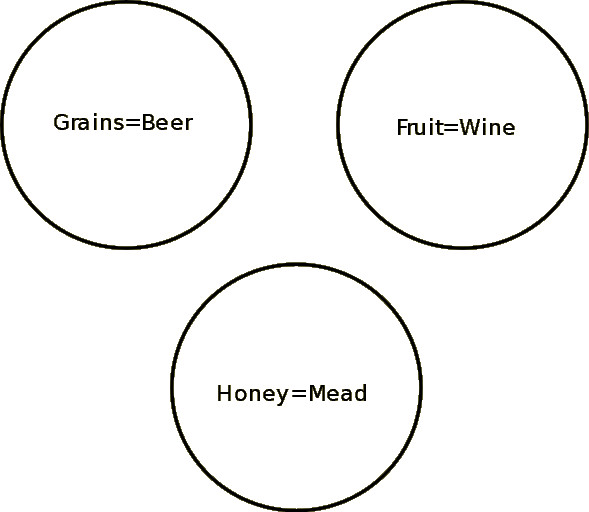
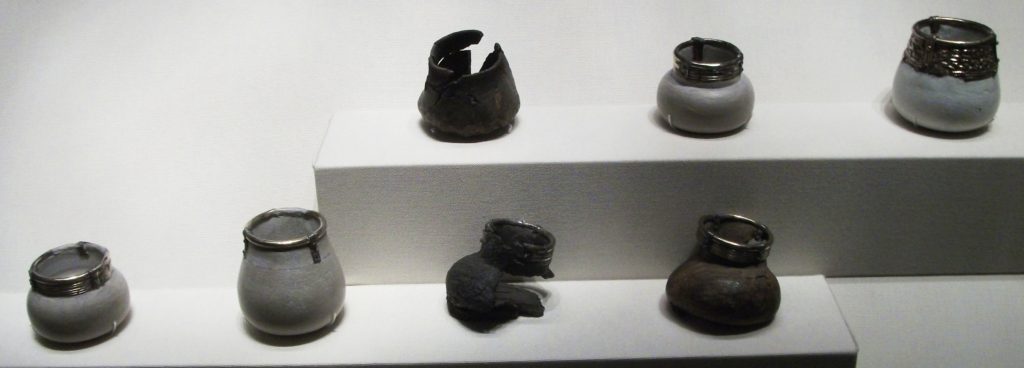
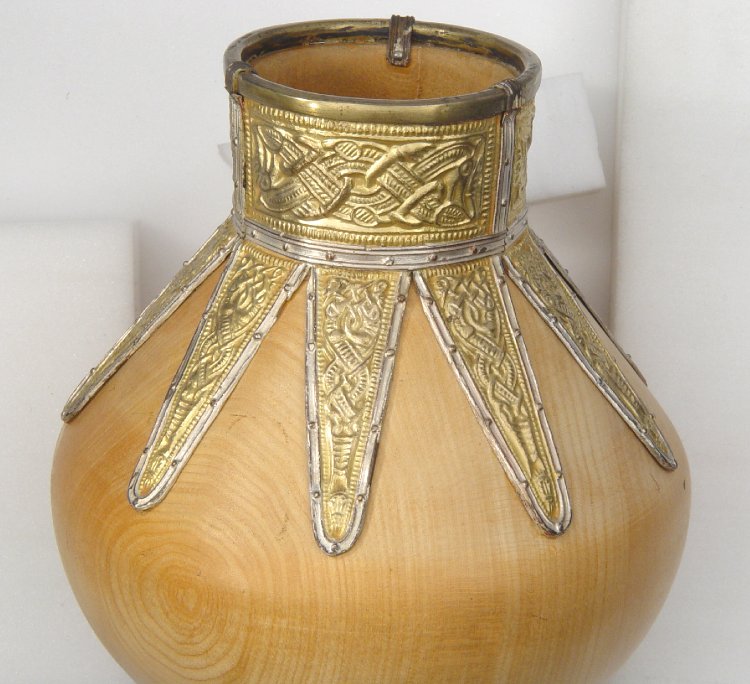
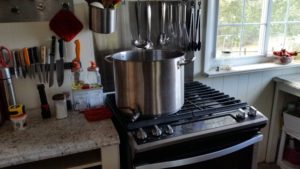
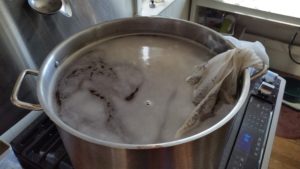
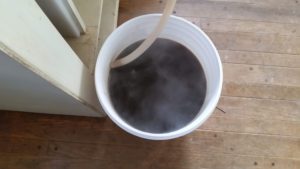 Here again, I was left with a digression from how I like to do things: being indoors, I don’t have access to hoses, which means no wort chillers. So, I did things the old-fashioned way, and put the lid (loosely) on the bucket, set it in the utility room, and left it overnight.
Here again, I was left with a digression from how I like to do things: being indoors, I don’t have access to hoses, which means no wort chillers. So, I did things the old-fashioned way, and put the lid (loosely) on the bucket, set it in the utility room, and left it overnight.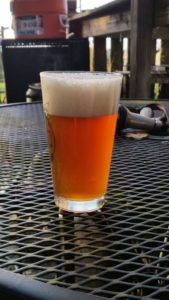 I’m not as happy with the Bitter as I was with the Pale Ale. A fair amount of it can be chalked up to the yeast, I think (Burton Ale Yeast,
I’m not as happy with the Bitter as I was with the Pale Ale. A fair amount of it can be chalked up to the yeast, I think (Burton Ale Yeast, 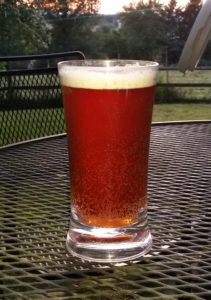 The color is a deep amber, and it throws a fine, off-white head. I’ve got the carbonation set pretty low; I was aiming for about 1.5 volumes of CO2. The bubbles you can see in the photo are due to a less-than-perfectly-clean glass; it’s certainly not aggressively fizzy.
The color is a deep amber, and it throws a fine, off-white head. I’ve got the carbonation set pretty low; I was aiming for about 1.5 volumes of CO2. The bubbles you can see in the photo are due to a less-than-perfectly-clean glass; it’s certainly not aggressively fizzy.